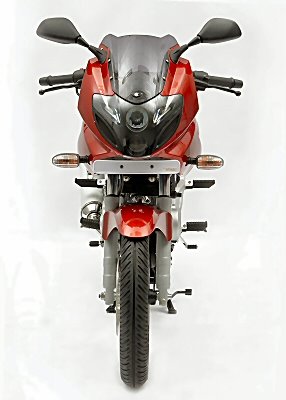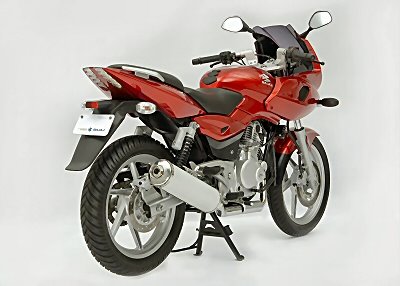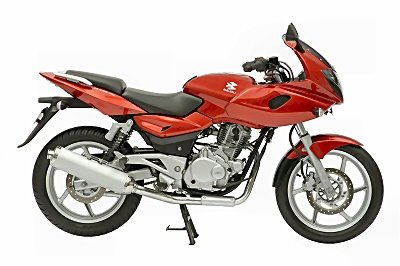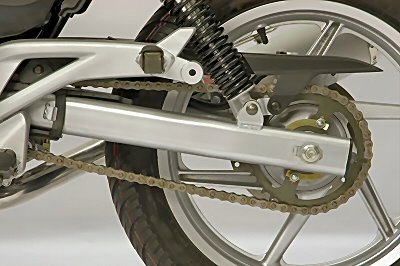This is in response to a request from one of my readers, so advanced riders can just skip this post. We'’re going to talk about the clutch and the gears. Some parts I have already discussed before, see How to match revs, Clutchless upshifts.
The clutch is a mechanism that allows the engine to run without affecting the rear wheel. In effect, it is used to isolate the engine and the rear wheel. The beauty of it is that it allows an infinite amount of adjustment of how isolated they are. And that adjustment is made by you, the rider. Without becoming too technical, here'’s the basic process. When you pull the clutch lever in, you disconnect the engine from the rear wheel. Try it on your bike. If it does not disconnect, you need to get your clutch adjusted. Now, with your bike on a main stand (resting on the front wheel and the stand, rear wheel off the ground), try releasing the clutch lever slowly. You should feel a point where the lever becomes '‘harder.'’ At this point, the rear wheel should start turning slowly. We call this the friction point. This is where the smallest link between the engine and the rear wheel is formed. From the friction point onwards, the further you let the clutch lever out, the stronger the link should become. When the lever is out, if your clutch is adjusted properly, the link should be complete.
We use the clutch to smoothen shifting gears. We use it to roll off from a standing start in first gear. We use it stop the engine from stalling (shutting off) just before we stop. And sometimes, in very slow traffic, we use it as a sort of soft brake to keep the bike rolling at very slow speed without the jerks that come from rolling on and off the throttle in first gear. Remember, apart from the last use, each clutch use is a finite event. It begins and ends and you should never find yourself with a half-depressed clutch lever except in the last situation.
The gears '‘convert'’ the engine'’s power into a more useable form. For instance, your engine speed (see your tacho) is 2500 rpm. If directly connected to your rear wheel, it would make the wheel turn that fast. At 2500 rpm, your average motorcycle will be travelling nearly 2 km on its 18-inch wheels every second. Which, as you can tell, would be scary and uncontrollable. The gearbox turns the 2500 rpm engine speed to a more reasonable and controllable speed of rotation for the rear wheel of a motorcycle. Again, without taking on the mechanical complexity of gearboxes, here'’s how to use them.
Your motorcycle will usually have four to five gears. First if primarily to get rolling. You shift into first (down on most motorcycles, up on Hero Hondas and some TVSs) with the clutch in. then, holding the throttle steady, you let the clutch out to get the bike rolling. At about fifteen-twenty kph, shift up into second (up on most bikes, up on Hero Hondas and TVSs, down on some Bajajs). If you have a tachometer, the idea is to keep the revs in the green band (that'’s good enough for beginners). If it drops below the green, shift down to a lower gear. If rises above the green, shift up to a higher gear. Basically, select a gear in the same direction as the needle is. Lower for below green and higher for above green.
Once you get more experienced, you can use the tachometer and the gears to control how much power you motorcycle is making. As you ride outside the green band, for instance, you will find a sweet spot, where the motorcycle seems most comfortable, most powerful. All you have to do now, is to keep the bike in that zone, again, using the same rule as in the previous paragraph.
When you are shifting down, advanced rides do something called matching revs (see this post), but donÂ’t worry about that for now. Once you get comfortable with using the gears, you can worry about finesse.
When slowing down, you will want to bring the bike down the gears as well. Usually, motorcycle transmissions hate to be shifted click-click-click down from fourth to first. So give them a break. Let the clutch in to just past friction point between shifts to ease the pressure on the system. That, more or less, is the gist of it. The rest is the art of clutchwork and gearwork. More on that later...
 Get to Goa, and forget Kingfisher. Really. Try Arlem. A nice, Goan beer, with a nice bite, good taste and the ability to survive on the table. It tastes decent even after it warms up a bit. Find King's beer. Another great (sadly) local beer. Distinctive bottle and taste. And did I mention it's dirt cheap? Okay, who said Fosters?
Get to Goa, and forget Kingfisher. Really. Try Arlem. A nice, Goan beer, with a nice bite, good taste and the ability to survive on the table. It tastes decent even after it warms up a bit. Find King's beer. Another great (sadly) local beer. Distinctive bottle and taste. And did I mention it's dirt cheap? Okay, who said Fosters?















































